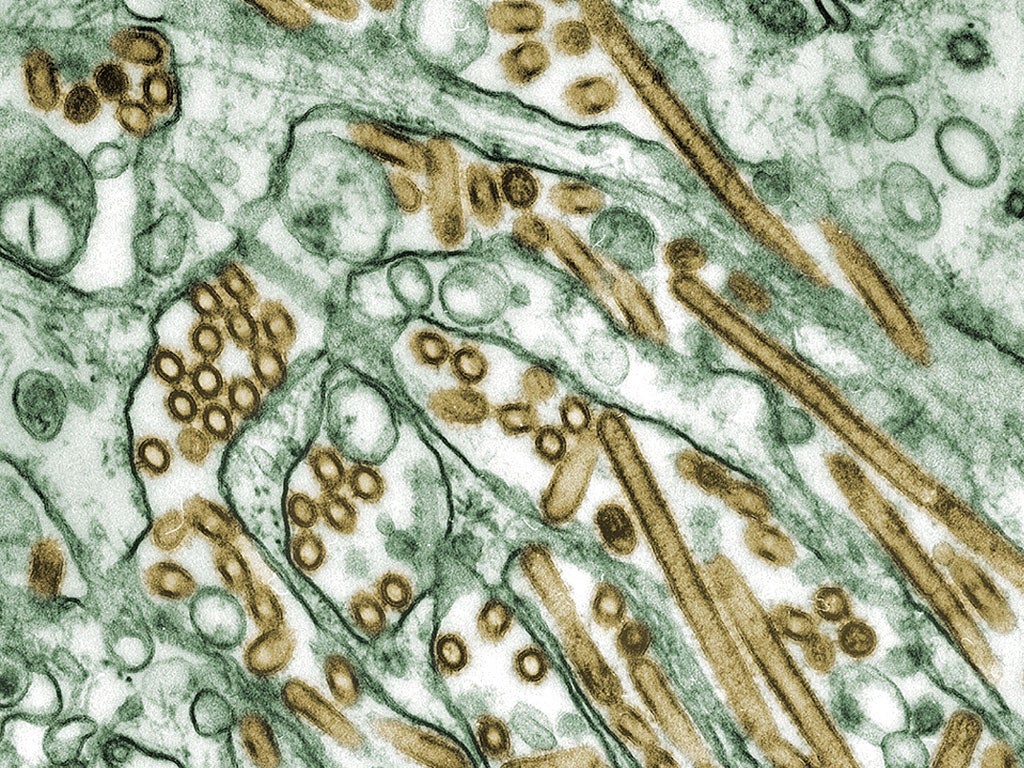'Appalling irresponsibility': Senior scientists attack Chinese researchers for creating new strains of influenza virus in veterinary laboratory
Experts warn of danger that the new viral strains created by mixing bird-flu virus with human influenza could escape from the laboratory to cause a global pandemic killing millions of people.

Your support helps us to tell the story
From reproductive rights to climate change to Big Tech, The Independent is on the ground when the story is developing. Whether it's investigating the financials of Elon Musk's pro-Trump PAC or producing our latest documentary, 'The A Word', which shines a light on the American women fighting for reproductive rights, we know how important it is to parse out the facts from the messaging.
At such a critical moment in US history, we need reporters on the ground. Your donation allows us to keep sending journalists to speak to both sides of the story.
The Independent is trusted by Americans across the entire political spectrum. And unlike many other quality news outlets, we choose not to lock Americans out of our reporting and analysis with paywalls. We believe quality journalism should be available to everyone, paid for by those who can afford it.
Your support makes all the difference.Senior scientists have criticised the “appalling irresponsibility” of researchers in China who have deliberately created new strains of influenza virus in a veterinary laboratory.
They warned there is a danger that the new viral strains created by mixing bird-flu virus with human influenza could escape from the laboratory to cause a global pandemic killing millions of people.
Lord May of Oxford, a former government chief scientist and past president of the Royal Society, denounced the study published today in the journal Science as doing nothing to further the understanding and prevention of flu pandemics.
“They claim they are doing this to help develop vaccines and such like. In fact the real reason is that they are driven by blind ambition with no common sense whatsoever,” Lord May told The Independent.
“The record of containment in labs like this is not reassuring. They are taking it upon themselves to create human-to-human transmission of very dangerous viruses. It’s appallingly irresponsible,” he said.
The controversial study into viral mixing was carried out by a team led by Professor Hualan Chen, director of China’s National Avian Influenza Reference Laboratory at Harbin Veterinary Research Institute.
Professor Chen and her colleagues deliberately mixed the H5N1 bird-flu virus, which is highly lethal but not easily transmitted between people, with a 2009 strain of H1N1 flu virus, which is very infectious to humans.
When flu viruses come together by infecting the same cell they can swap genetic material and produce “hybrids” through the re-assortment of genes. The researchers were trying to emulate what happens in nature when animals such as pigs are co-infected with two different strains of virus, Professor Chen said.
“The studies demonstrated that H5N1 viruses have the potential to acquire mammalian transmissibility by re-assortment with the human influenza viruses,” Professor Chen said in an email.
“This tells us that high attention should be paid to monitor the emergence of such mammalian-transmissible virus in nature to prevent a possible pandemic caused by H5N1 virus,” she said.
“It is difficult to say how easy this will happen, but since the H5N1 and 2009/H1N1 viruses are widely existing in nature, they may have a chance to re-assort,” she added.
The study, which was carried out in a laboratory with the second highest security level to prevent accidental escape, resulted in 127 different viral hybrids between H5N1 and H1N1, five of which were able to pass by airborne transmission between laboratory guinea pigs.
Professor Simon Wain-Hobson, an eminent virologist at the Pasteur Institute in Paris, said it is very likely that some or all of these hybrids could pass easily between humans and possess some or all of the highly lethal characteristics of H5N1 bird-flu.
“Nobody can extrapolate to humans except to conclude that the five viruses would probably transmit reasonable well between humans,” Professor Wain-Hobson said.
“We don’t know the pathogenicity [lethality] in man and hopefully we will never know. But if the case fatality rate was between 0.1 and 20 per cent, and a pandemic affected 500 million people, you could estimate anything between 500,000 and 100 million deaths,” he said.
“It’s a fabulous piece of virology by the Chinese group and it’s very impressive, but they haven’t been thinking clearly about what they are doing. It’s very worrying,” Professor Wain-Hobson said.
“The virological basis of this work is not strong. It is of no use for vaccine development and the benefit in terms of surveillance for new flu viruses is oversold,” he added.
An increasing number of scientists outside the influenza field have expressed concern over attempts to deliberately increase the human transmissibility of the H5N1 bird-flu virus. This is done by mutating the virus so that it can pass by airborne droplets between laboratory ferrets, the standard “animal model” of human influenza.
Two previous studies, by Ron Fouchier of Erasmus Medical Centre in Rotterdam and Yoshihiro Kawaoka of the University of Wisconsin, Madison, caused uproar in 2011 when it emerged that they had created airborne versions of H5N1 that could be passed between ferrets.
The criticism led to researchers to impose a voluntary moratorium on their H5N1 research, banning transmission studies using ferrets. However they decided to lift the ban earlier this year, arguing that they have now consulted widely with health organisations and the public over safety concerns.
However, other scientists have criticised the decision to lift the moratorium.
Join our commenting forum
Join thought-provoking conversations, follow other Independent readers and see their replies
Comments